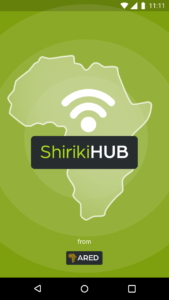
Public Wi-Fi for the Masses: ARED’s Revolutionary Approach or a Digital Trojan Horse?

Introduction of Public Wi-Fi in Africa: In an era where digital connectivity is as essential as electricity, ARED’s groundbreaking approach in deploying AI-powered public Wi-Fi across Africa has sparked a significant debate. Is this a leap forward in bridging the digital divide, or does it pose risks of technological imposition on local markets?
The Innovation of ARED’s AI-Powered Wi-Fi: ARED’s initiative in providing public Wi-Fi, especially in remote and underserved areas of Africa, is nothing short of revolutionary. By harnessing the power of Artificial Intelligence (AI), ARED has developed a system that not only offers seamless internet connectivity but also adapts to the unique needs of different communities. This AI-driven approach ensures efficient network management, predictive maintenance, and enhanced user experiences, making digital access more inclusive and reliable.


Empowering Local Communities: One of the most commendable aspects of ARED’s model is its empowerment of local entrepreneurs. By equipping them with the tools and technology to manage Wi-Fi hotspots, ARED is fostering a grassroots digital economy. This not only creates job opportunities but also ensures that the benefits of technology are rooted in local needs and aspirations.
Concerns of Digital Imposition: However, the rapid introduction of such advanced technology in traditionally low-tech markets raises concerns. Critics argue that without adequate digital literacy programs, such technology might overwhelm local populations, leading to a digital divide rather than bridging it. There’s also the fear of cultural erosion and data privacy issues, as AI systems require massive data inputs, often personal in nature. ARED WIFI platform.
Balancing Innovation with Cultural Sensitivity: For ARED’s model to be truly effective, it must balance cutting-edge technology with cultural sensitivity. This involves not just deploying technology but also engaging with communities to understand their needs, fears, and aspirations. Tailoring solutions that respect local customs and provide real value is crucial.
Conclusion: ARED’s use of AI in providing public Wi-Fi is undoubtedly a bold step towards digital inclusivity in Africa. While it opens up numerous opportunities, it also brings to the fore the need for responsible and culturally aware implementation. Whether ARED’s approach will be seen as a revolutionary stride or a digital Trojan Horse depends on how well it aligns technological advancement with the heartbeat of local communities.

